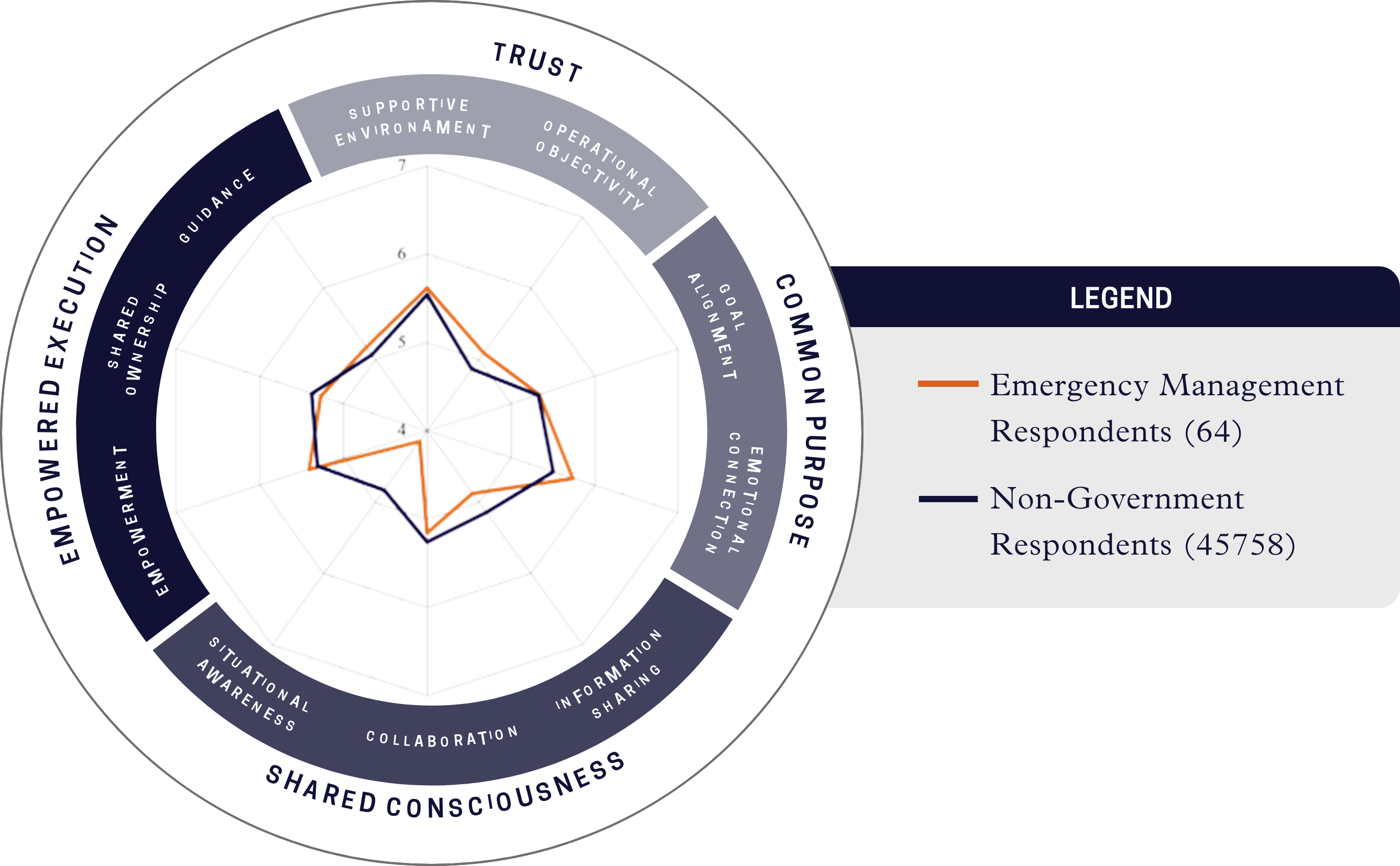Information flow is most critical during times of crisis, but the fundamentals that underpin effective information sharing are built in periods of relative calm. And while information-sharing often increases during the early throes of crisis, it usually remains inefficient.
Key stakeholders lacked a “single source of truth” for crucial information, and some stakeholders had simultaneously too much of the “wrong” information and not enough of the “right” information. Across the organization, team members had several meetings on their calendars, but these were organized around subsets of stakeholders and/or specific topic areas and did not provide context relevant to the group as a whole.
McChrystal Group partnered with a state and its emergency management teams as it responded to a crisis to ensure all key players were on the same page and could share information across teams and throughout the organization by establishing a communication forum.
By working directly with stakeholders to identify areas of focus and priorities, then establishing a bi-weekly, cross-functional, intelligence-sharing forum, the emergency managers tasked with the crisis response were able to have a structure that facilitated information exchanges to provide context and explain the consequences of decisions. This allowed participants to find ways to remove roadblocks, leverage successes, and identify opportunities to connect offline to pursue shared goals.
As a result, the team was better able to coordinate its crisis response, allowing stakeholders to eliminate multiple meetings, and in turn, reclaiming the time to focus on the task at hand. Structuring and openly sharing information, along with greater transparency on decision-making and follow-through, dramatically bolstered trust and interoperability across the dynamic and layered organization.
The organization was then also able to pivot the function this structure served to later adapt not only to the crisis but also to embrace a broader range of preparedness to be ready to face future challenges.






